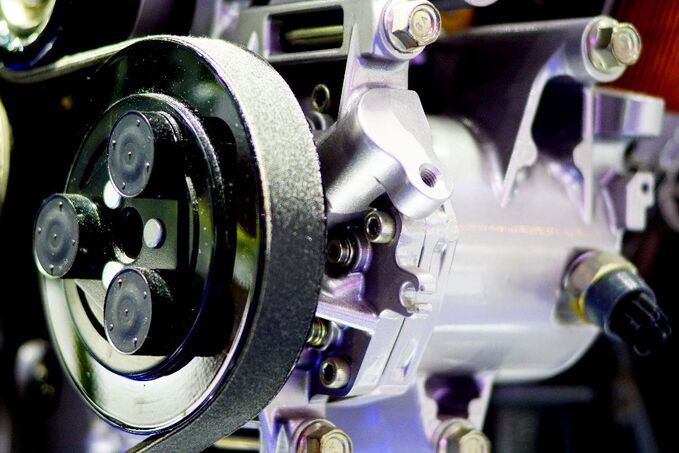How to Diagnose a Failing Power Steering Pump
Date Posted: 2 August 2021

Most of us take the steering function of our car for granted. It is one of those things that we just expect to work. For this reason, it is easy to become complacent.
The power steering pump on your car serves to ensure that fluid reaches the steering system. Without it, you would struggle to control and maneuver the car safely. Therefore it is in your best interests to be mindful of the condition of your steering pump and know how to spot the warning signs that indicate things aren’t quite right with it. It is also helpful to know the simple steps you’d need to follow should you ever find yourself having to replace a defective steering pump.
Warning Signs of A Defective Power Steering Pump
Like any element of your car, a steering pump is prone to wear and tear. This problem can be exacerbated if proper maintenance isn’t carried out on the vehicle. Ultimately, a defective steering pump threatens to put your life and those of your passengers, as well as other road users, at risk.
This is why you need to be aware of the following warning signs and take action if you notice any signs that your steering pump is malfunctioning:
A Whining Noise When You Turn The Wheel
This is an obvious indication that there could be a leak in the pump or the power steering fluid is low and needs to be topped up.
The Steering Wheel Has a Delayed Response
A car should respond the moment you turn the steering wheel. If you notice that your car’s steering responds slower than usual, this may indicate that the power steering pump needs to be replaced.
The Steering Wheel Feels Stiff
If you suddenly struggle to turn the steering wheel, this could be a sign of a defective steering pump.
The Car Makes Groaning Noises
If you hear loud, distracting sounds coming from your car, it is a sign of trouble and should be addressed immediately. It could be linked to a failing power steering pump or part of a broader mechanical issue.
You Hear a Squeaking Sound When You Turn the Key In the Ignition or Take a Sharp Turn
Again, any unfamiliar sound is an indication that there is an issue with your car, so get it seen by a certified technician as soon as possible.
How To Replace A Steering Pump
If you’ve noticed any of the signs mentioned above, it is best to get your car to a mechanic as soon as possible. Any delay has the potential to lead to a dangerous solution.
A certified professional will be the person best placed to diagnose the issue and take the necessary steps to get the problem sorted. With their knowledge and expertise, the chances are you’ll be back on the road in next to no time.
However, if you have a good level of mechanical know-how and the right tools, you may be able to replace the steering pump yourself! Just remember to choose a replacement steering wheel pump that matches your make and model of car. You can find a great range, with lots of advice, at Machter.
Along with small variations between parts, the process for replacing the steering wheel pump may differ between makes and models of car. The below guide is for a 2003-2007 Honda Accord, but the basic steps should be the same regardless of your car.
There are 9 simple steps for replacing a power steering pump:
- Start by locating the power steering pump.
- Place a container under the pump and drain the power steering fluid by disconnecting the feed and return line.
- Remove the power steering pump.
- Install the replacement power steering pump and bolt it down.
- Reconnect the feed and return lines to the pump.
- Reconnect the belt.
- Fill the pump with power steering fluid.
- Turn the engine on to allow the fluid to circulate and let it run before you attempt to drive.
- Before taking to the road, be sure to turn your steering wheel in both directions to ensure it operates smoothly.
In short, the power steering pump is an essential component of any modern vehicle and something we need to be less complacent about. Taking the time to understand any signs of trouble for your power steering pump is a significant first step. Although the process of replacing your steering pump is relatively straightforward, especially if you follow the easy 9-step process described above, it is always safer to have all your mechanical work carried out by a certified mechanic wherever possible.





